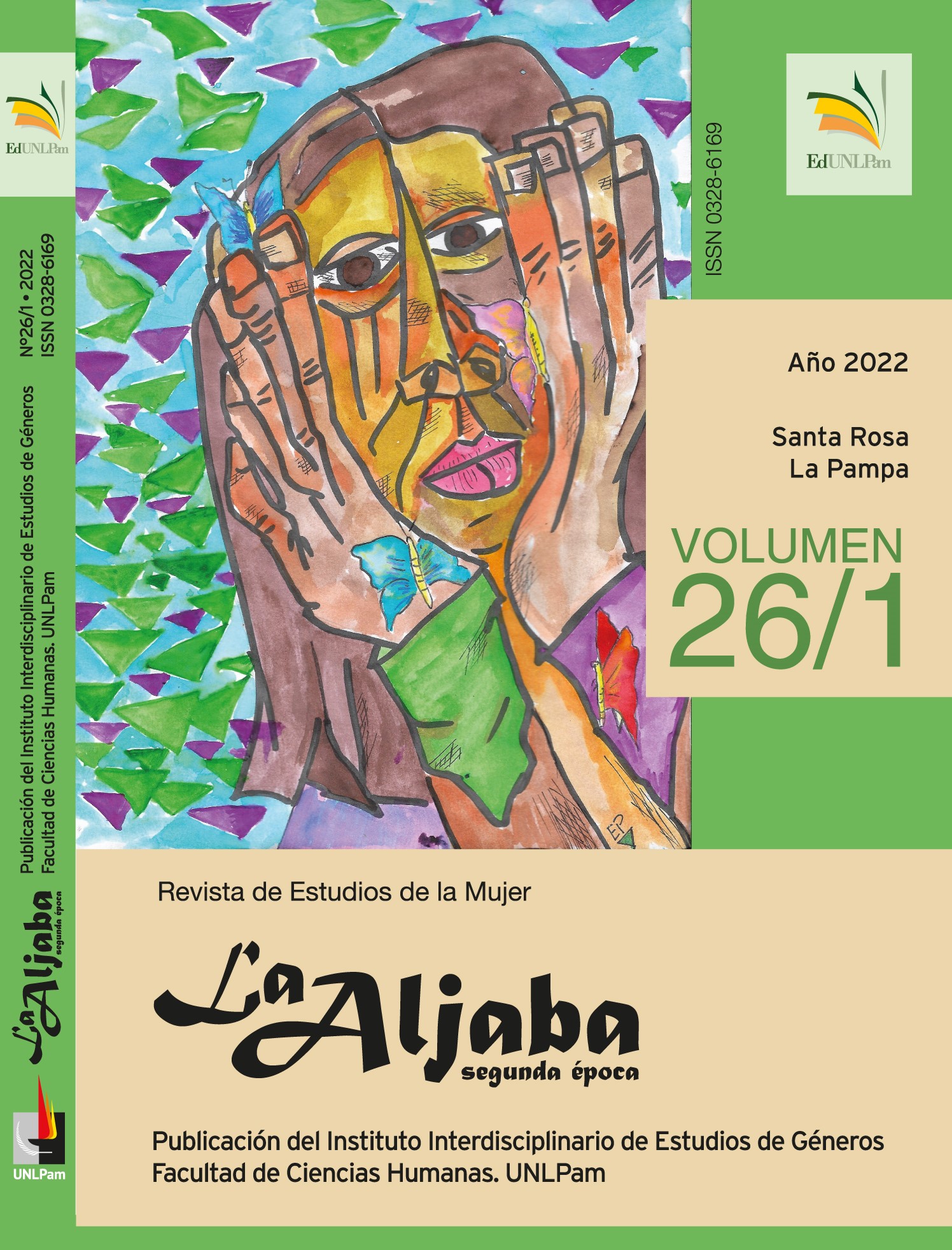The ‘Cornelia frente al espejo’ machine: sub-versions of gender and identity
DOI:
https://doi.org/10.19137/la-aljaba-v261-2022-3Keywords:
technologies, gender, identity, feminityAbstract
The following article analyzes the story “Cornelia frente al espejo,” written by Silvina Ocampo in 1988, and the movie released in 2012 with homonymous title, directed by Daniel Rosenfeld, as one composition. To that end, elements and concepts of the Feminist Film Theory, Queer Theories and French Post-Structuralism are taken into consideration. Far from pretending to position itself as a literary and/or film review ofeach one of the works individually, this article aims at distinguishing the operations performed by the text-movie machine at play with questions on gender (or, more precisely, the process of genderization) and identity. In this sense, both pieces -with their mutual interplays- are presented in one composition as a semiotic-narrative corpus that works as foundations on and from which the building of a reader-spectator with specific features may be distinguished. The various affective tonalities, images, symbols and disruptions offered by the text-movie machine may also be identified.
Downloads
References
BIANCOTTO, Natalia (2012). Avatares de la rareza: Cornelia frente al espejo, de Daniel Rosenfeld.
BUTLER, Judith ([1990] 2007). El género en disputa. El feminismo y la subversión de la identidad. Barcelona, Paidós.
_______ ([1993] 2019). Cuerpos que importan. Sobre los límites materiales y discursivos del “sexo”. Buenos Aires: Paidós.
_______ (1998). Actos performativos y constitución del género: un ensayo sobre fenomenología y teoría feminista. México.
DE LAURETIS, Teresa (1989). La tecnología del género. En Technologies of Gender. Essays on Theory, Film and Fiction. London, Macmillan Press.
DELEUZE, Gilles, GUATTARI, Félix ([1980] 2004). 1227 - Tratado de nomadología: la máquina de guerra. En Mil mesetas. Valencia: Pre-textos.
DELEUZE, Gilles ([1980-1981] 2019). Salir del mundo de los signos. En En medio de Spinoza. Buenos Aires, Cactus.
GUERRA, Lucía (2004). Cuerpo de mujer y rituales del adorno en "Ifigenia" de Teresa de la Parra. Letras femeninas, 30(1), 129-140.
KAPLAN, Ann (1983). ¿Es masculina la mirada?. En Las mujeres y el cine. A ambos lados de la cámara. Madrid, Ediciones Cátedra.
Klingenberg, Patricia (1994). Silvina Ocampo frente al espejo. Inti, (40/41), 271-286.
MORENO, María (2013). Gradiva sin Freud: Dior. En Subrayados. Leer hasta que la muerte nos separe. Buenos Aires, Mardulce.
MULVEY, Laura (1989). Visual pleasure and narrative cinema. In Visual and other pleasures (pp. 14-26). Palgrave Macmillan, London.
OCAMPO, Silvina (1988). Cornelia frente al espejo. En Cornelia frente al espejo. Barcelona, Tusquets Editores.
PANESI, Jorge (2004). El tiempo de los espejos: Silvina Ocampo. Orbis Tertius, 9(10).
PRECIADO, Paul Beatriz ([2008] 2017). Testo yonqui. Sexo, drogas y biopolítica. Buenos Aires: Paidós.
PUNTE, María José (30 de noviembre y 1 de diciembre de 2017). La niña queer y su performance melancólica en la versión fílmica de “Cornelia frente al espejo” de Silvina Ocampo. II Jornadas de Cine, Teatro y Género, IAE, UBA, Buenos Aires.
ROSENFELD, Daniel (2012). Cornelia frente al espejo [cinta cinematográfica]. Argentina: Argentinacine, INCAA y Hubert Bals Fund.






















4.jpg)




